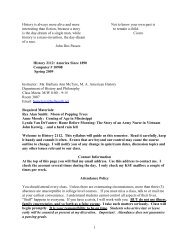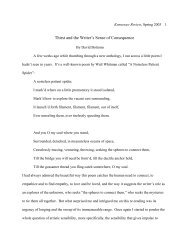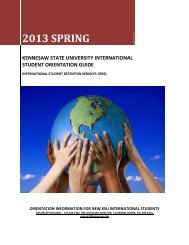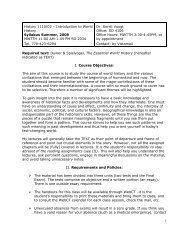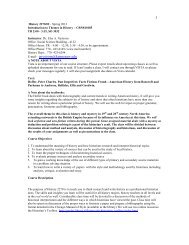Food, Gender and Cultural Hegemony - Kennesaw State University
Food, Gender and Cultural Hegemony - Kennesaw State University
Food, Gender and Cultural Hegemony - Kennesaw State University
Create successful ePaper yourself
Turn your PDF publications into a flip-book with our unique Google optimized e-Paper software.
Cualli 132<br />
thous<strong>and</strong>s of sacks of wheat flour, along with wine, vinegar <strong>and</strong> olive oil were<br />
imported at royal expense. John Super describes in great detail the substantial efforts<br />
made <strong>and</strong> the expense taken by the crown to pass <strong>and</strong> impose regulations which<br />
ensured the production <strong>and</strong> distribution of crucial foods, including wheat <strong>and</strong> wine.<br />
According to Super, “This was seen as part of a broader commitment to an ideal<br />
community that would perpetuate the Spanish way of life,” (Super 40).<br />
Migration accounts of the Nahua people emphasize food, food preparation <strong>and</strong><br />
food consumption. These accounts demonstrate the importance of particular foods to<br />
the identity <strong>and</strong> survival of the Nahua people. The inclusion of food has been<br />
interpreted as an important metaphor of the successful continuity of Nahua culture <strong>and</strong><br />
religion (Moran 15-18). The Mexica identity included specific foods <strong>and</strong> particular<br />
uses of food in ritual. The appearance of food <strong>and</strong> maize as well as the presence of a<br />
metate or stone grinder in the glyphs of migration indicate stability <strong>and</strong> security for the<br />
Mexica as they established themselves in Tenochtitlan (Codex Azcatitlan 15).<br />
Elizabeth Moran argues that the Aztecs deliberately acquired territory that would<br />
allow them access to goods of significance to their culture. This was also seen as<br />
important to the economic <strong>and</strong> political success of the empire.<br />
In 1960 George M. Foster argued in Culture <strong>and</strong> Conquest that the<br />
development of what he called "conquest culture" involved several interrelated<br />
processes (Foster 227-229). Foster pointed out that Indians <strong>and</strong> Spaniards alike<br />
experienced the process of cultural change. Both Indians <strong>and</strong> Spaniards, when<br />
allowed choice, exercised discretion in accepting <strong>and</strong> rejecting cultural elements<br />
presented to them. Foster argues that time also influenced how the new colonial<br />
culture developed. The New World situation brought together Spaniards from<br />
different regions of Spain who also influenced each other. In the first years Spaniards<br />
came predominantly from Andalusia <strong>and</strong> Extremadura. For this reason, although the<br />
demographic mix of Spanish emigration was fairly balanced across regions over the<br />
sixteenth century, cultural traits from Southwestern Spain (the type of plow, for<br />
example) were those primarily adopted in the New World. In this first "highly fluid,<br />
formative period…in which the basic answers to new conditions of life had to be<br />
found, <strong>and</strong> a rapid adaptation to changed conditions on the part of both Indians <strong>and</strong><br />
[Type text]



